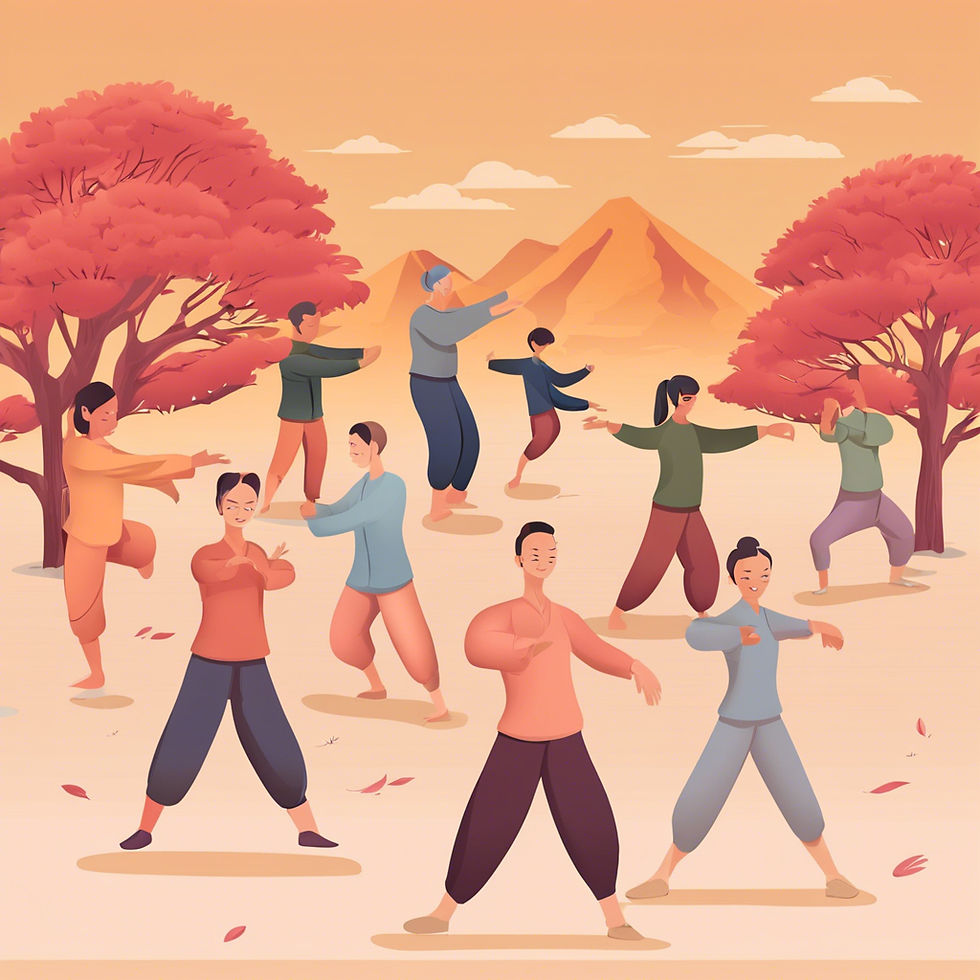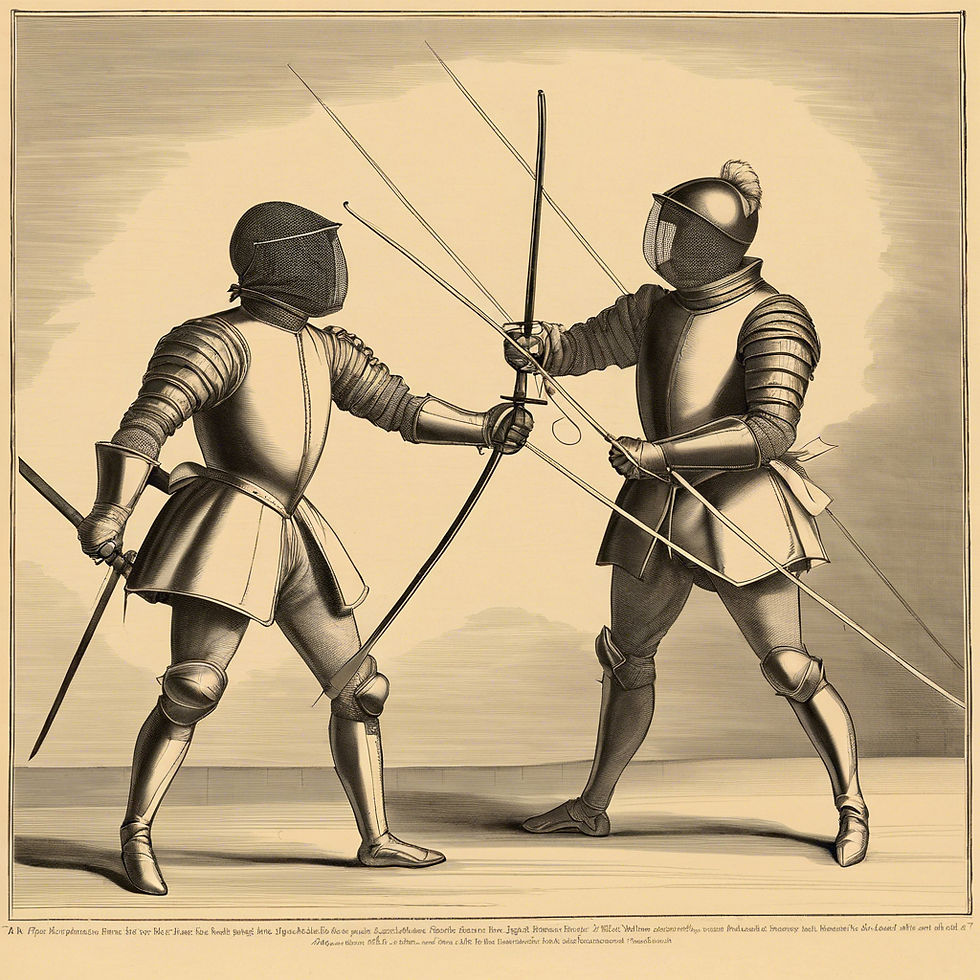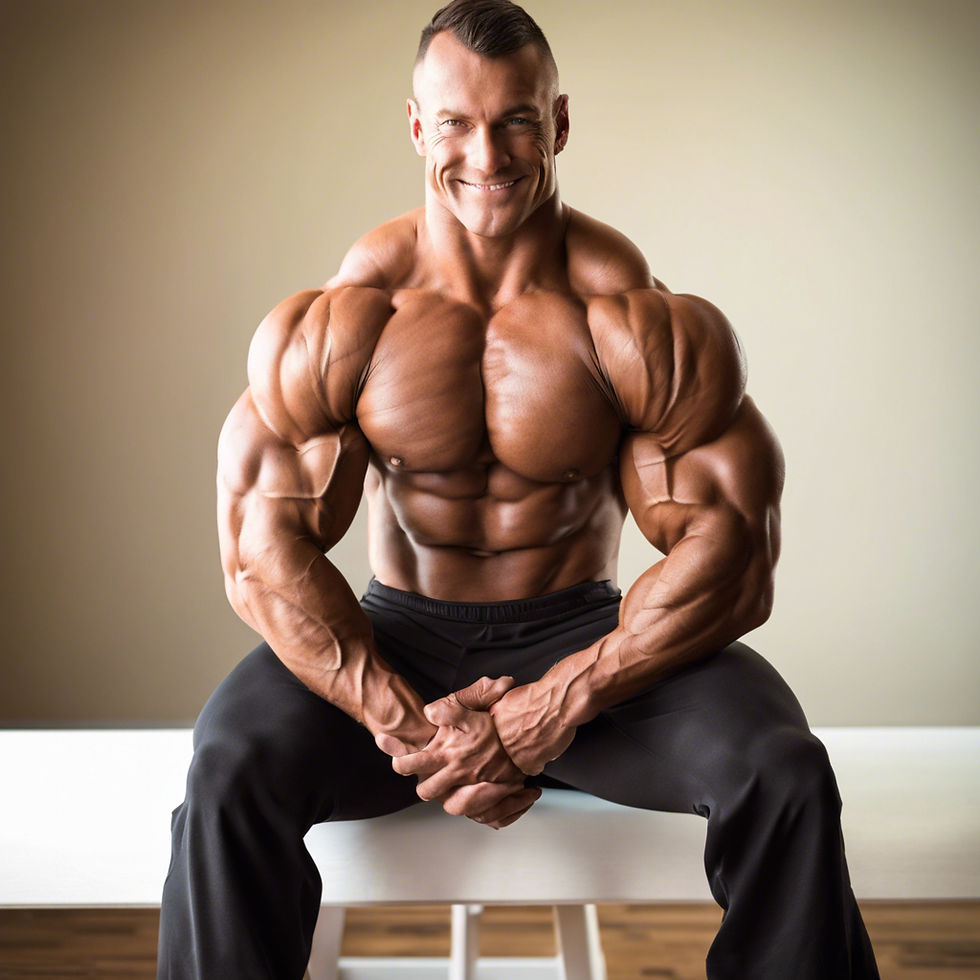Fitness Through the Ages: A Journey Through Time to Discover Workout Wisdom
- FitnessFirstAcademy

- Aug 6, 2024
- 4 min read

Have you ever wondered how people stayed in shape before the advent of gyms, treadmills, and protein shakes? Believe it or not, our ancestors were just as dedicated to physical fitness as we are today, albeit with different methods and motivations. Let's take a fascinating journey through time, exploring the evolution of fitness from ancient civilizations to the modern era.
The Ancients: Masters of Movement
In ancient civilizations, physical fitness wasn't just about aesthetics; it was a matter of survival, warfare, and spiritual well-being.
Greece: The Cradle of AthleticismThe ancient Greeks held physical fitness in high regard, with athletes training rigorously for the Olympic Games, participating in events such as running, jumping, wrestling, and discus throwing. Philosophers like Plato believed in a harmonious balance between mind and body, promoting physical training as essential for overall well-being.

Dig Deeper: Watch "Ancient Greek Olympics: The Original Games" on YouTube: https://youtu.be/JwoBdRC2fzE?si=uODa3_NJUfmf9v65
Rome: The Might of the Gladiators Gladiators were the epitome of strength and combat prowess. They endured grueling training regimens that involved weightlifting with stone weights, running, sword fighting, and intense sparring sessions. This dedication to physical training ensured their survival in the arena and solidified their legendary status.

Dig Deeper: Explore "Gladiator Workout - Ancient Rome" on YouTube: https://youtu.be/Wmat8xK9raM?si=EJnaUEOeE1SQcthw
China: Harmony of Mind and BodyAncient China gave birth to practices like Tai Chi and Qigong, combining gentle movements, breath control, and meditation. These disciplines focus not just on physical strength, but also on cultivating internal energy (qi or chi) and achieving a harmonious balance between mind, body, and spirit.

Dig Deeper: Discover the beauty of Tai Chi with "Tai Chi for Beginners" on YouTube: https://youtu.be/hIOHGrYCEJ4?si=hntS4NvstuVqT-kP
Medieval and Renaissance Eras: Strength and Skill
The medieval and Renaissance periods witnessed a shift in fitness focus, with a strong emphasis on martial prowess and the pursuit of physical beauty.
Knights and Warriors: Forging Ironclad Bodies Medieval knights were formidable warriors who relied on physical strength and skill to survive in battle. Their training regimes involved heavy lifting, intense combat drills,horseback riding, and mastering various weapons.

Dig Deeper: Witness the intensity of medieval combat training in "Medieval Fighting Training & Weapons" on YouTube: https://youtu.be/NAYsVjKd5yY?si=gs86RHmHeaw4E5ir
The Renaissance Ideal: A Return to Classical Aesthetics
The Renaissance period marked a renewed appreciation for the human form and a revival of classical Greek ideals of physical beauty and athleticism. Fencing, dancing, and horseback riding gained popularity, reflecting a desire for both strength and elegance.

Dig Deeper: Explore the graceful art of fencing with "Fencing Basics" on YouTube: https://youtu.be/a8IdfA5fXJs?si=3p1MS66pJFhOXrOy
The Industrial Revolution and Beyond: The Rise of Modern Fitness
The Industrial Revolution brought about profound changes to society, influencing how people approached fitness.
The Birth of the Modern Gym: With technological advancements and urbanization, dedicated spaces for physical training emerged. Early gyms featured basic equipment and focused on strength training and gymnastics, laying the foundation for modern fitness facilities.
The Golden Age of Bodybuilding: The late 19th and early 20th centuries saw the rise of bodybuilding legends like Eugen Sandow and Charles Atlas. Their impressive physiques and innovative training methods sparked a global interest in strength training and muscle development.

Dig Deeper: Witness the origins of bodybuilding with "Eugen Sandow - The Father of Modern Bodybuilding" on YouTube: https://youtu.be/Sm7esmcE36c?si=RnrlrzdLWimGGneQ
The Fitness Boom of the 1980s:The 1980s witnessed a fitness revolution, characterized by the aerobics craze and the rise of home workout videos. This era popularized group fitness classes, colorful leotards, and catchy workout music, making exercise more accessible and enjoyable for the masses.

Dig Deeper: Step back in time with "80s Aerobics Workout" on YouTube: https://youtu.be/ZFShxBjee9Y?si=eYUgbD5HILdCifVw
Lessons from the Past: Timeless Wisdom for Modern Workouts
While fitness trends and technologies have evolved, we can still glean valuable lessons from our ancestors' approach to fitness.
Prioritize Functional Movement: Many ancient fitness practices emphasized natural movements like running,jumping, and carrying heavy objects. These movements remain fundamental for building a strong, agile, and resilient body.
Cultivate the Mind-Body Connection: Ancient cultures recognized the deep connection between mind and body.Integrating mindfulness practices like yoga and meditation into your fitness routine can enhance focus, reduce stress, and promote overall well-being.
Embrace Community and Play: In the past, exercise was often a communal and playful activity. Find activities you enjoy and share your fitness journey with friends and family to make it a fun and social experience.
Incorporating Ancient Wisdom into Your Modern Workout:
Bodyweight Training: Rediscover the power of your own body with exercises like push-ups, squats, lunges, and planks. These time-tested movements require no equipment and can be done anywhere, making them a convenient and effective way to build strength and improve fitness.
Outdoor Activities: Embrace nature and enjoy the physical and mental benefits of activities like hiking,swimming, cycling, and kayaking. Reconnect with the natural world and experience the joy of movement in the great outdoors.
Mindful Movement: Incorporate practices like yoga, tai chi, or meditation into your routine to cultivate a sense of calm, focus, and body awareness. These practices can complement your physical training and enhance your overall well-being.
Conclusion:
The pursuit of fitness is a timeless human endeavor. By exploring the diverse practices of the past and embracing their wisdom, we can enrich our modern workouts and cultivate a holistic approach to health and well-being.
Remember, fitness is a journey, not a destination. Find activities you enjoy, connect with your body and mind, and make movement a joyful part of your life.
Call to Action:
Share your favorite historical fitness practices or your experiences with incorporating ancient wisdom into your modern workouts in the comments below!
References:
Fox, Robin Lane. The Classical World: An Epic History from Homer to Hadrian. Basic Books, 2006.
Poliakoff, Michael B. Combat Sports in the Ancient World: Competition, Violence, and Culture. Yale University Press, 1987.
Reid, Daniel. The Tao of Health, Sex, and Longevity: A Modern Practical Guide to the Ancient Way. Simon & Schuster, 1989.
Norman, A. V. B. The Medieval Soldier. Barnes & Noble, 1971.
Hale, J. R. Renaissance Europe: The Individual and Society 1480-1520. Blackwell Publishers, 1971.
Whorton, James C. Crusaders for Fitness: The History of American Health Reformers. Princeton University

About the Author:
Alexander Morrow is a NASM Certified Personal Trainer, ACE Certified Personal Trainer, NCSF Certified Strength & Conditioning Coach & ACE Fitness Nutrition Specialist with a passion for helping people reach their fitness goals. With a focus on strength training and functional movement, he believe in building a strong, capable body from the inside out. Connect with @FitnessFirstAcademyF1A on Instagram or visit www.FitnessFirstAcademy.com/blog for more training tips and inspiration.
Get Ready to Feel Strong and Powerful!



Comments